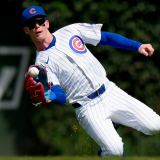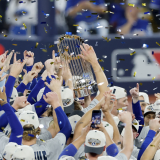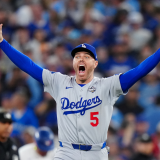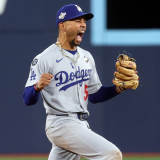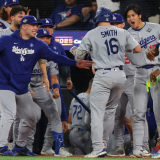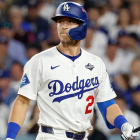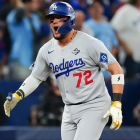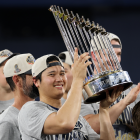World Series X-factors: With Fall Classic tied 2-2, here's what the Dodgers and Blue Jays need to win it all
The 2025 World Series will be decided this weekend in Toronto

The World Series is down to a best-of-three. Tuesday night the Blue Jays impressively bounced back from the 18-inning marathon loss in Game 3 to even the series their series with the Dodgers at two games apiece (TOR 6, LAD 2). This guarantees the World Series will end north of the border at Rogers Centre in Game 6 on Friday or Game 7 on Saturday.
"I feel really good about this team every night," Blue Jays manager John Schneider said after the Game 4 win. "It's hard to play 18 innings and come back and kind of flip the narrative against a very talented team and a very talented individual in Shohei Ohtani on the mound. I feel really good about just us focusing on [Wednesday's] game."
Historically, teams that take a 3-2 lead in a best-of-seven have gone on to win the series 70% of the time, though you needn't look back far to see the last time a team came back from 3-2. The Blue Jays did it against the Mariners in the ALCS last week. Still, I'm sure the Blue Jays would rather go back to Toronto up 3-2 than down 3-2. Same for the Dodgers, of course.
We've reached the pitching rematch portion of the World Series. It'll be Blake Snell vs. Trey Yesavage in Game 5, same as Game 1, when neither pitched especially well. Yesavage didn't have his splitter that night and went only four innings. Snell needed 100 pitches to get through five-plus innings, allowing Toronto to go to work on the bullpen (which led to a nine-run inning).
Here now are two key factors for each team heading into the final two or three games of the World Series.
Los Angeles Dodgers
The rest of the offense has to show up
It is not really flying under the radar anymore than the Dodgers' offense other than the singular Ohtani and the great Freddie Freeman isn't doing much of anything. Since the start of the NLDS, Ohtani and Freeman are hitting a combined .253/.388/.589 with eight home runs in 116 plate appearances. The rest of the Dodgers: .210/.290/.306 with seven homers in 375 plate appearances.
This says it all about the Dodgers' World Series offense:
The Dodgers offense has struggled through the first four games of the 2025 World Series pic.twitter.com/PKd6zCt22x
— FOX Sports: MLB (@MLBONFOX) October 29, 2025
Much has been made about Toronto's high-contact offense, but the Blue Jays and Dodgers have similar strikeout rates this series (19.3% vs. 21.6%). The larger problem is the Dodgers have hit a ton of weak pop ups and fly balls, which are easy outs. The Blue Jays have a 20.9% to 15.0% edge in line drive rate and, relatedly, a .300 to .239 edge in batting average on balls in play.
After Game 4, manager Dave Roberts said he's "going to think long and hard and (the lineup) might look a little bit different" in Game 5, though he has only so many options available. He can sit Andy Pages and Kiké Hernández, and replace them in the lineup with Alex Call and Miguel Rojas, and that's about it. The Dodgers have a shockingly thin bench for a team with that payroll.
Rearranging the lineup is an option -- I'd bat Ohtani and Freeman 1-2 to get them the most at-bats, and also because the Blue Jays don't have a dominant lefty reliever to throw at them in the late innings -- but that's all that is, rearranging. It's simple: Either Mookie Betts, Teoscar Hernández, Max Muncy, et al will start hitting and the Dodgers will have a great chance, or they don't and they won't.
It's time to put Treinen on the back-burner
The entire bullpen is shaky, so perhaps it's unfair to single out Blake Treinen, but he's allowed four runs and 12 baserunners in 4 ⅓ innings this postseason, and 14 runs and 32 baserunners in his last 12 innings dating back to the regular season. He's clearly a liability and yet Roberts keeps using him in high leverage situations. Roberts must treat Treinen as the last guy in the bullpen.
Similar to the bench, the Dodgers' have a shockingly weak bullpen for a team with that payroll. Roki Sasaki and Emmet Sheehan are their two most reliable righty relievers at this point, and it's probably worth giving Edgardo Henriquez (and Game 4 hero Will Klein?) more responsibility. Roberts has only so many options available to him. It's clear now though Treinen is the worst of them.
Yoshinobu Yamamoto showed the best way to handle the bullpen in Game 2: throw a complete game. That's unrealistic, you can't expect complete games in this age, but the more length the Dodgers get out of their starters, the better. I mean heck, Ohtani pitched into the seventh inning in Game 4 and even that wasn't enough. The on-paper rotation advantage the Dodgers have must show up.
Toronto Blue Jays
The more Bichette, the better
Bo Bichette returned to the lineup in the World Series after missing seven weeks with a knee injury, and it's impossible to tell he had such a long layoff. He is 4 for 11 (.364) with two walks and one strikeout in the World Series, and two of his four hits would've been doubles had Bichette been able to run at 100%. He's returned to the lineup and been an immediate difference-maker.
"I'll never count Bo out against anybody with a bat in his hand at any point in the calendar year," Schneider said after Game 4. "... I think that he's been pretty locked in since the start of the series with the bat in his hands."
George Springer is day-to-day with a side injury, which allowed Bichette to DH and play the entire game in Game 4. In his two starts a second base, he was replaced for a pinch-runner/defensively late, and that was especially costly in the Game 3 marathon. Isiah Kiner-Falefa wound up getting more plate appearances (five) than Bichette (four) despite entering in the seventh inning.
Springer is still on the roster, which means the Blue Jays expect him to play again at some point, even if only as a pinch-hitter. As long as he's out of the lineup, Bichette can DH. That's really the only upside to Springer being hurt. The Blue Jays want both guys in the lineup, not one or the other. It's unclear if that will be possible at any point the rest of the series.
If Springer does return to the lineup though, we're at the point in the series and on the calendar where the Blue Jays should just run Bichette out there at second base and leave him in the entire game, even late in close games. The bullpens are both so combustible that Bichette's bat will likely be more valuable than Kiner-Falefa's glove (which is OK, not spectacular) in the late innings.
Game 5 is Wednesday. Thursday is an off day, then it's Games 6 and 7 on Friday and Saturday. The schedule allows Bichette to rest the day after Game 5. In Game 6, the Blue Jays will either have a chance to win the World Series or need to win to extend their season. In either case, you want Bichette playing the entire game. The same goes for Game 7.
Yesavage getting a second wind
Game 1 was not easy for Yesavage. He was charged with only two runs in four innings, but the Dodgers worked him hard, and at one point seven of 10 batters reached base. Yesavage threw only 10 splitters in Game 1 because he simply didn't have feel for the pitch. Also, his velocity was down, as he failed to crack 95 mph for the second straight start.
Here is Yesavage's maximum velocity in his seven big league starts (regular season and postseason):
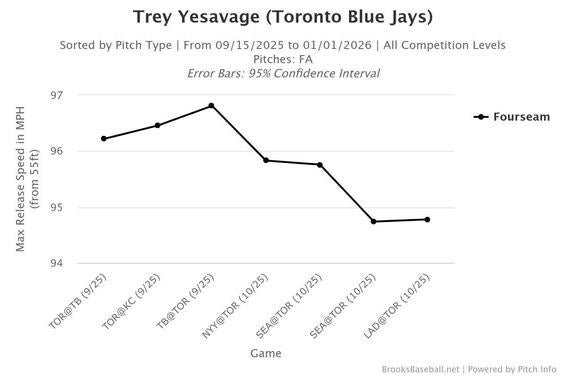
That looks like a young pitcher running out of gas now that he's well over his previous career high in innings and also pitching deeper into the year than ever before. You can even see it within his starts. In Game 1, Yesavage's fastball averaged 94.9 mph in the first inning, 93.9 mph in the second, 93.8 mph in the third, and 92.9 mph in the fourth. That's a pretty big in-game drop off.
Velocity is not everything, but there is a big difference between sitting 94-95 mph and topping out at 97 mph like Yesavage did much of the year, and sitting 92-93 mph and topping out at 95 mph like Yesavage did in Game 1. Velocity will help the splitter play up and also just give Yesavage more margin of error. The faster the pitch, the less time the hitter has to react. Baseball 101.
Yesavage looks worn down. So does everyone playing in the World Series, but he's a young pitcher, and in uncharted workload territory. Game 5 will be his final start of 2025 one way or the other. Can he find a second wind and have a better fastball? It would make a world of difference, especially now that the Dodgers are getting a second look at him.


